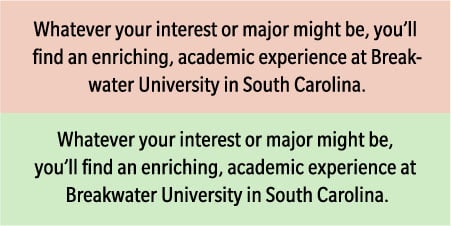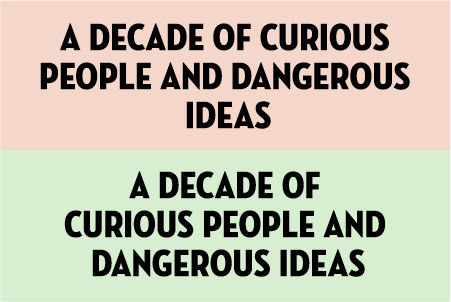TypeTalk: Best Headline Breaks

Q. Should I pay attention to how a headline breaks, or is that the job of the writer and copy editor?
A. Today, a designer is also the typesetter, so you’re responsible not only for how the type looks, but for making it as readable, logical, and clear as possible. The line breaks of a headline have a major impact on this.
When a headline or subhead is more than one line long, it will break. If you leave these line breaks up to software, you often get text that doesn’t read well or look as good as it could. You need to review all heads and subheads and make manual breaks for both sense and balance.
Breaking for sense means reading the copy and making line breaks where you might logically pause when reading it aloud. This includes keeping adjectives with their nouns, breaking after punctuation, keeping proper names or hyphenated words on one line, etc. In addition, avoid hyphenation in heads and subheads, as it reduces readability, which is critical when trying to capture your audience before they turn the page or look away.

Figure 1. The upper setting of this ad copy has poor and unnatural line breaks that are very noticeable when you read it aloud. The subject and verb (you’ll and find) shouldn’t break, and the proper name of the University shouldn’t be hyphenated nor broken into two lines. Below it is the better solution, with the line breaking after the comma which keeps the subject and verb together, and the name of the university kept together and without any hyphenation. Set in Slate Condensed.
Breaking for balance means avoiding widows, very short lines, and extremely unbalanced line widths.

Figure 2. This book subtitle has bad line breaks in the upper setting, as it not only divides two important phrases, but ends in a very short line, all of which reduce its impact and readability. The solution below it makes more sense and is more visually balanced. Set in Neutraface Condensed Titling.
This article was last modified on April 19, 2023
This article was first published on October 1, 2009



